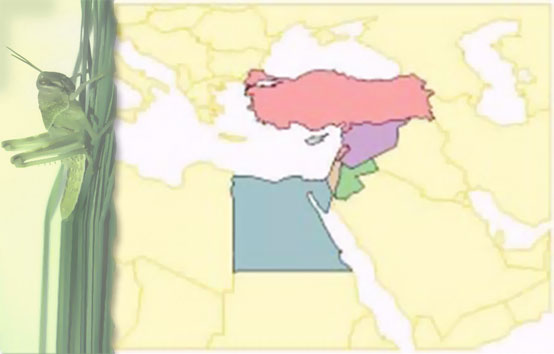Phytoecia geniculata Mulsant
(A subspecies, Phytoecia geniculata orientalis Kraatz, has been described from Turkey).
Common name: Carrot borer.
Systematic position: Insects, Holometabola, Coleoptera, Cerambycidae.
Distribution: Middle East, Iraq, Iran, and Eastern Europe.
Host plants: Carrot (Daucus carota L.) and other Asteraceae.
Description: Body of adult narrow, about 10 mm long, elytra black with a dense greyish pubescence, antennae as long as body, legs mostly greyish with an anterior yellow segment.
Life history: Phytoecia geniculata is univoltine and usually infests plants growing in sandy soils. The adults become active in spring and place their eggs at the plants’ taproots. The hatching larvae enter the roots, feed and may eventually kill young or weakened plants. By late summer, the larvae construct a chamber within which they pupate, remaining inactive till the following spring.
Economic importance: Well-developed carrots are usually not damaged, but small, or weakened plants that grow slowly, can be harmed and even die.
References
Halperin, J. and Holzchuh, C. 1993. Host-plants of Israeli Cerambycidae (Coleoptera), with new records. Phytoparasitica 21: 23.
Sama G., Buse, J., Orbach, E., Friedman, A.L.L., Rittner, O.O. and Chikatunov, V.V. 2010. A new catalogue of the Cerambycidae (Coleoptera) of Israel with notes on their distribution and host plants. Munis Entomology & Zoology 5: 1-51.
Sama, G., Katbeh-Bader, A. and Miloud Madi, D. 2002. A preliminary catalogue of the Cerambycidae of Jordan. Bulletin de la Société entomologique de France 107: 471-487.
Sama, G., Rapuzzi,. P. and Kairouz, A. 2010. Catalogue commenté des Cerambycidae du Liban. An annotated catalogue of the Cerambycidae of Lebanon (Insecta Coleoptera Cerambycidae). Quaderni di Studi e Notizie di Storia Naturale della Romagna 30: 131-201.
WEBSITES
